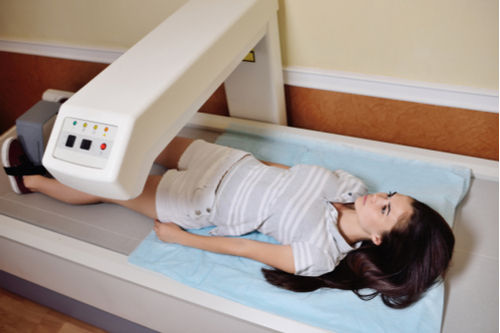Orthopedic Conditions
Surprising but True! A Small Wound Can Result In Severe Bone Infection. Know how
4 min read
By Apollo 24|7, Published on - 06 June 2022, Updated on - 20 June 2023
Share this article
0
2 likes

Let’s accept it. Most of us rush through things in our day-to-day lives. This hurry often makes us overlook small cuts and injuries that we endure due to our own making. Occasionally, this haste can put us in harm’s way. Even a tiny cut can make us susceptible to osteomyelitis, a severe bone infection. The article explains the risks posed by osteomyelitis in detail below.
What is osteomyelitis?
Osteomyelitis is a rare but severe bacterial infection of the bone. The bacteria can enter the body through blood vessels or nearby infected wounds. Once infected, the bone tissue experiences inflammation. Without timely treatment, osteomyelitis can cause severe damage or death of the bone tissue. The infection can occur in both children and adults, albeit in different ways.
What are the symptoms?
Some of the most common osteomyelitis symptoms are:
- Fever

- Nausea
- Fatigue or general discomfort
- Swelling and pain at the site of infection
- Impaired range of joint motion
- Drainage of pus-like fluid through the skin
How do bacteria affect the bone?
Osteomyelitis is mostly caused by Staphylococcus aureus, a type of staph bacteria that can be present on the skin or in the nose. The bacteria mainly affects individuals with a weakened immune system. The bacteria can enter the body in one of these ways:
- Bloodstream: Infections in different parts of the body can result in bacteremia (presence of bacteria in the blood), allowing the bacteria to reach a certain bone. Once reached, the bacteria deposit, grow, and destroy the bone slowly.
- Injuries: An infected open wound, minor trauma, or open injury that exposes the bone to bacteria and other pathogens can result in osteomyelitis infection.
- Surgery: Osteomyelitis can also result from direct contact with bacteria during orthopaedic procedures like joint replacement or fracture surgery.
Who is at risk?
According to experts, certain factors are associated with an increased risk of osteomyelitis. People with the following risk factors may be at a greater risk of bone infection:
- Diabetes
- Smoking
- Old age
- HIV or AIDS
- Alcohol abuse
- Dialysis
- Sickle cell disease
- Rheumatoid arthritis
- Long-term steroid use
- Intravenous (IV) drug use
- Peripheral arterial disease (PAD)
- Surgeries (knee or hip replacement)
Is the infection the same in children and adults?
According to experts, the location of osteomyelitis infection varies among different age groups. In children, the infection mostly affects the adjoining ends of long bones i.e., femur and tibia bones in the legs and the humerus and radius bones (in the arms). On the other hand, in adults, bones of the spinal cord and pelvis are the primary targets of osteomyelitis infection.
How is it diagnosed?
The doctor will ask certain questions related to medical history and conduct a physical examination to look for signs of osteomyelitis. Post-physical examination, the doctor may prescribe blood tests that look for white blood cells and other markers of inflammation such as C- reactive protein and ESR tests. While the blood tests wouldn’t diagnose osteomyelitis, their results would offer clues that will help the doctor determine what additional tests may be required. Based on the results of the blood test report, the physician may prescribe:
- Imaging tests such as X-ray, MRI, CT scan and ultrasound to get detailed images of the bones, muscles and tissues.
- Bone scan to detect infections during an imaging scan.

- Biopsy to detect osteomyelitis and determine the most appropriate treatment.
How is osteomyelitis treated?
Common treatments for osteomyelitis include surgical procedures and medications.
1. Medications
A bone biopsy will disclose the type of germ triggering the infection. The biopsy will assist the doctor in determining which antibiotic will be effective against infection. The antibiotics are usually injected via a vein in the arm for nearly 6 weeks. In more serious cases, an additional course of oral antibiotics may be prescribed. For better treatment results, people with chronic ailments should consider taking active measures to manage their condition(s).

2. Surgery
After taking into account the severity of the infection, surgery may be recommended. The osteomyelitis surgery may involve one or more of the following procedures:
- Opening and draining the infected area
- Removal of diseased bone and tissue
- Restoring the flow of the blood to the bone
- Removing any foreign objects
If any of the procedures mentioned above fail to curb the infection, the affected limb would be amputated to stop the further spread.
A simple injury can expose your bone to deadly infection-causing bacteria. While osteomyelitis can occur to anyone, smokers and those with chronic health conditions, such as diabetes or kidney failure, are more at risk of developing osteomyelitis. It is important to understand that early detection of osteomyelitis is linked to better treatment outcomes, therefore, one must not leave a wound unattended.
Need more information?
Medically reviewed by Dr Sonia Bhatt.
Orthopedic Conditions
Leave Comment
Recommended for you

Orthopedic Conditions
Scoliosis: Are You Struggling with a Curved Back?
Scoliosis is a condition characterized by curvature of the spine. It causes twisting or rotation of the spinal bones resulting in a sideways curve.

Orthopedic Conditions
Don’t Ignore Your Back Pain! It Can Be Sciatica
Consistent back pain can be a sign of sciatica. Read to know the ways to prevent it.

Orthopedic Conditions
Why Do Arthritis Patients Suffer Immensely Despite Consulting Numerous Doctors?
Arthritis is a disabling disease that requires a multi-directional approach for treatment. This article addresses the cause of arthritis and why is it challenging to manage.
Subscribe
Sign up for our free Health Library Daily Newsletter
Get doctor-approved health tips, news, and more.
Visual Stories

How to Keep Your Bones Strong and Healthy Naturally
Tap to continue exploring
Recommended for you

Orthopedic Conditions
Scoliosis: Are You Struggling with a Curved Back?
Scoliosis is a condition characterized by curvature of the spine. It causes twisting or rotation of the spinal bones resulting in a sideways curve.

Orthopedic Conditions
Don’t Ignore Your Back Pain! It Can Be Sciatica
Consistent back pain can be a sign of sciatica. Read to know the ways to prevent it.

Orthopedic Conditions
Why Do Arthritis Patients Suffer Immensely Despite Consulting Numerous Doctors?
Arthritis is a disabling disease that requires a multi-directional approach for treatment. This article addresses the cause of arthritis and why is it challenging to manage.